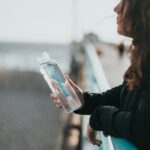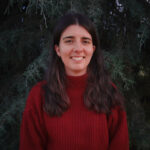
Portugal is one of the European countries that consumes the most bottled water
Tap water is perfectly safe to drink, but that doesn’t stop each Portuguese person from consuming 140 liters of bottled water a year. Italy tops
We didn't find any happenings mapped to your criteria.
Try the traditional search to find articles not yet mapped with RUA.
We didn't find any happenings mapped to your criteria.
Try the traditional search to find articles not yet mapped with RUA.
We didn't find any happenings mapped to your criteria.
Try the traditional search to find articles not yet mapped with RUA.
We didn't find any happenings mapped to your criteria.
Try the traditional search to find articles not yet mapped with RUA.
The “Big River Watch” initiative asks the community to share information about the health of rivers in a free app, thus helping to identify and locate problems.
The Rivers Trust organization has just launched the Big River Watch spring, an initiative that invites all citizens of the UK and Ireland to record their observations of their local rivers in a free app. The aim is to monitor the pollution of watercourses and build up a set of national data, which will help assess the scale of the sewage crisis and build up a picture of the health of rivers.
The app contains a simple survey with questions related to what you see – from wildlife and plants to the speed of water flow and the existence of pollution. The app provides identification guides for pollution and wildlife to make it easier to fill in the survey.
To take part, you don’t need to have any experience or knowledge of river health or the river environment: you just need to have access to a river, choose a riverside location, observe the river for 15 minutes and answer the survey questions.
“Our rivers are far from healthy. They are polluted with sewage, plastics, chemicals and nutrients, and only 15% of river stretches in England are in good overall health (…). Across the UK and Ireland, our vital freshwater ecosystems are failing health tests. To change this, we need to know where our rivers are having problems and which problems are most prevalent,” reads the website of the initiative.
The results collected will be analysed by experts from the organization and made available through an interactive dashboard, so that they can be used by other environmental organizations, journalists or community groups to help in the fight for healthier and wilder rivers.
The data will help to take measures to improve rivers, helping to reverse plastic pollution or stem the flow of untreated sewage. They will also help to identify the best places to clean up rivers and collect garbage, create wetlands or install leaky dams that slow down the flow, increase biodiversity and reduce the risk of flooding, for example.
“As well as learning where pollution and wildlife are detected, we also want to know how spending time near rivers affects people’s wellbeing,” says Tessa Wardley, director of communications and outreach at the Rivers Trust, speaking to The Guardian.
In the UK and Ireland, the sewage system allows untreated human waste to mix with rainwater and domestic wastewater, overloading the pipes. This toxic mixture of wastewater and chemicals is then drained into watercourses to prevent it from accumulating in homes.
According to figures from the water industry, the system is failing due to a lack of investment in pipes and sewers, a growing population and increasingly heavy rainfall, boosted by climate change.
The first Big River Watch week, held in September last year, had more than 5,000 participants, almost 60% of whom were new to citizen science.
The application and survey are open all year round. The Rivers Trust expects this to be the UK and Ireland’s largest ever survey of river health.


Tap water is perfectly safe to drink, but that doesn’t stop each Portuguese person from consuming 140 liters of bottled water a year. Italy tops

Prio has opened a new washing center in Lagoa, Algarve, which reuses 100% of the water used in car washing. A project to reuse water

The United Nations Water Conference has not been held since the 1970s. It ended this Friday in New York with commitments from the 149 participants

This article addresses an action that promotes the protection and restoration of water-related ecosystems, including mountains, forests, wetlands, rivers, aquifers, and lakes.
 To discover businesses that are actively working to contribute to this Sustainable Development Goal, click here.
To discover businesses that are actively working to contribute to this Sustainable Development Goal, click here. To read news, interviews or tips related to this Goal, click here.
To read news, interviews or tips related to this Goal, click here.Esta publicação também está disponível em:
![]() Português (Portuguese (Portugal))
Português (Portuguese (Portugal))

